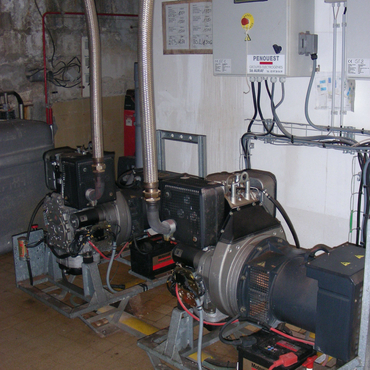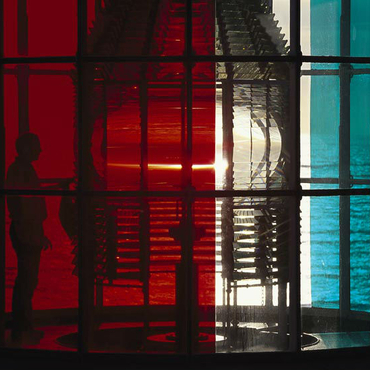
- Home
- Just another lighthouse ?
- The moderniation of Cordouan in the 19th century
- Ever-changing technology
Since the installation of Fresnel's original lens in 1823, Cordouan's lighting system underwent several changes. A red section was added in the 1850s. To better guide sailors through the straits, the engineers devised a way to vary the colour of the light depending on the angle from which it was observed. By using coloured panes of glass to distinguish dangerous areas (red and green) from those that were safe (white), boats could be guided safely to safe waters. Cordouan was no longer just a marker for the estuary, it also helped sailors find they way at night. This change shows that night navigation was changing with the arrival of steam-powered ships. In 1896, the second Fresnel lens was removed and replaced by a fixed light with white, red and green sectors. A decade later, a pressurized kerosene lamp was installed – the light source of choice for offshore lighthouses – which provided a brighter, more powerful light. After World War II, two generators were installed at the lighthouse for the comfort of the keepers and to produce light, thanks to an enormous 6,000-watt bulb. The light changed character, with moving panels that periodically shaded the light (2+1 occultations every 12 seconds). After the lighthouse was electrified, the electric light was reduced in size and power, thanks to new technologies (xenon and metal halides). In 2011, the final stage of the lighthouse's modernisation, automation meant that keepers no longer needed to light the lamp. As in every lighthouse in France, particularly those offshore, automation allowed keepers to return to land, as their presence was no longer required to keep the light functioning.
Associated media
Open Media Library
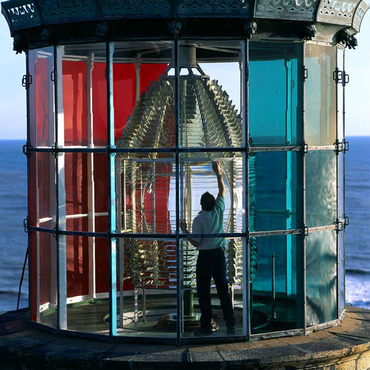
The lighthouse's current lens

The lantern of the Cordouan Lighthouse

The lantern of the Cordouan Lighthouse
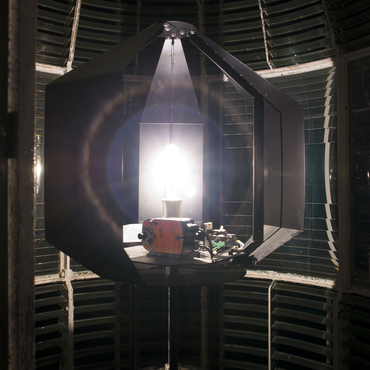
The lantern of Cordouan lighthouse

The lantern Cordouan Lighthouse

The lantern of the Cordouan Lighthouse
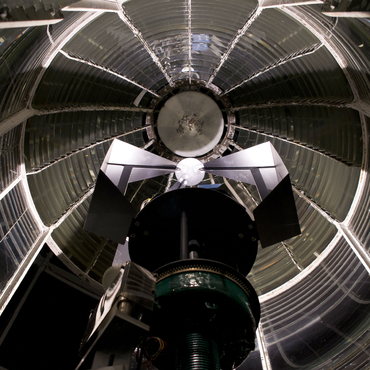
The lantern of the Cordouan Lighthouse
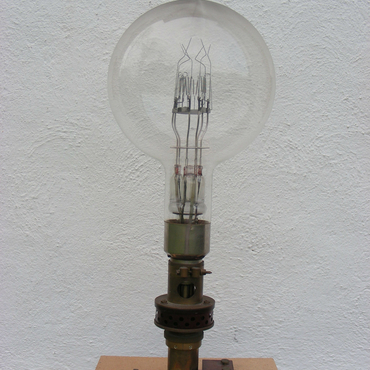
Three-phase 6,000-watt lightbulb
